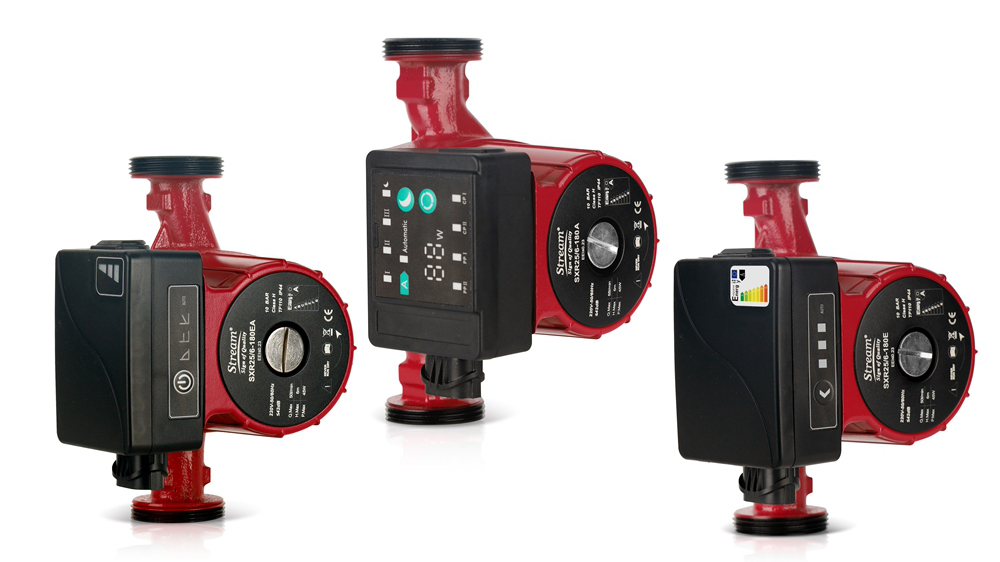+86 13816508465
Apr. 17, 2025
As energy efficiency and sustainability become priorities for European households and businesses, heating and water circulation systems are undergoing a quiet revolution. The shift from traditional fixed-speed pumps to intelligent, self-adjusting smart pumps is reshaping how we manage energy consumption. But what exactly sets these two technologies apart? Let’s dive into the key differences, pros and cons, and why smart pumps are emerging as the future of eco-friendly circulation.

How Do Traditional and Smart Pumps Work?
Traditional Fixed-Speed Pumps
· Basic Principle: Operate at fixed speeds (typically 3 preset modes: high, medium, low).
· Operation: Once set, they run at a constant power level regardless of actual system demand.
· Example Scenario: A pump runs at "high speed" 24/7 during winter, even when lower flow rates could suffice.
Smart Circulating Pumps
· Core Technology: Use variable-speed motors (ECM or permanent magnet) and sensors to monitor real-time data (e.g., temperature, pressure, flow rate).
· Adaptive Operation: Automatically adjust speed and power to match system needs.
· Slow down when demand drops (e.g., at night).
· Speed up to compensate for blockages or higher demand.
· AI Integration: Some models learn usage patterns to optimize performance over time.
Head-to-Head Comparison: Pros and Cons | ||
Factor | Traditional Pumps | Smart Pumps |
Energy Efficiency | ❌ Fixed speed = wasted energy (C/D energy class). | ✅ Saves 50–80% energy (A-class efficiency). |
Noise Levels | ❌ Loud at high speeds (50–60 dB). | ✅ Near-silent at low speeds (<40 dB). |
Upfront Cost | ✅ Affordable (€100–€300). | ❌ Higher initial cost (€300–€800). |
Long-Term Savings | ❌ High electricity bills over time. | ✅ ROI in 3–5 years via energy savings. |
Environmental Impact | ❌ Higher CO₂ emissions. | ✅ Reduces carbon footprint. |
Flexibility | ❌ Manual adjustments required. | ✅ Self-optimizes for changing conditions. |
Smart Features | ❌ Basic functionality only. | ✅ Wi-Fi connectivity, diagnostics, automation. |
Why Smart Pumps Are Winning in Europe
1. EU Energy Directives: Strict ErP regulations phase out inefficient pumps, favoring A-class smart models.
2. Lower Lifetime Costs: A €500 smart pump saves ~€150/year in energy (based on EU average €0.25/kWh).
3. Quiet, Low-Maintenance Operation: Ideal for homes and noise-sensitive environments.
4. Future-Proofing: Smart pumps integrate with renewable systems (e.g., solar thermal, heat pumps).
Key Considerations When Choosing a Smart Pump
1. Energy Certification: Look for EU Energy Label A rating.
2. Control Modes: Ensure it supports ΔT (temperature differential) or ΔP (pressure) adjustment.
3. Compatibility: Verify it works with your existing heating/cooling system.
4. Smart Connectivity: Opt for pumps with app control or IoT integration if automation is a priority.
5. Warranty: Prioritize models with 5+ years of coverage for electronics.
The Bottom Line
While traditional pumps offer lower upfront costs, smart circulating pumps deliver unmatched energy savings, quieter operation, and compliance with Europe’s green transition goals. For homeowners and businesses aiming to cut utility bills and carbon emissions, upgrading to a smart pump isn’t just a choice—it’s a sustainable investment.
Previous: None
Address
No.17 XeDa Jimei Ind. Park, Xiqing Economic Development Area, Tianjin, China
Telephone
+86 13816508465
QUICK LINKS